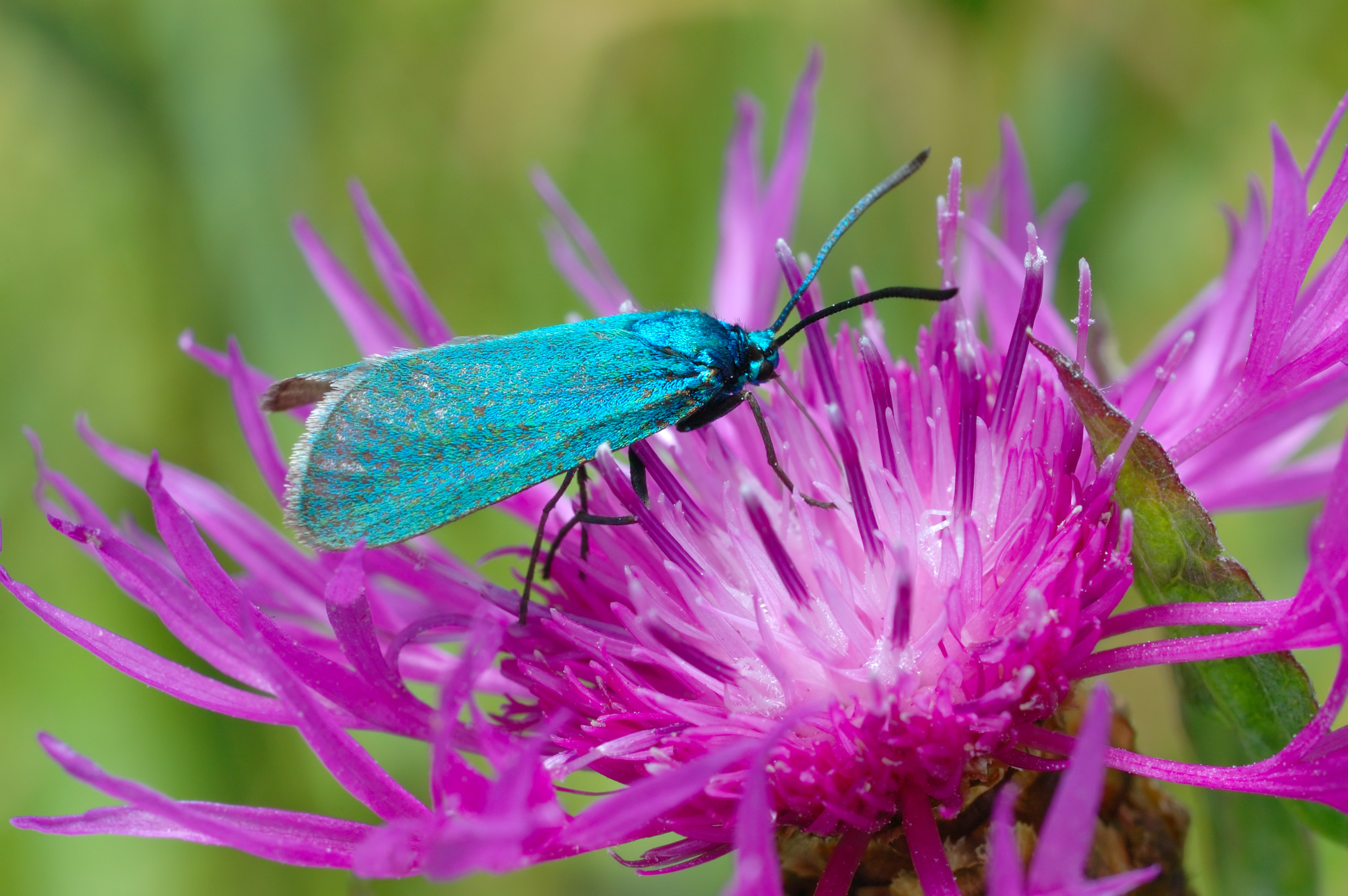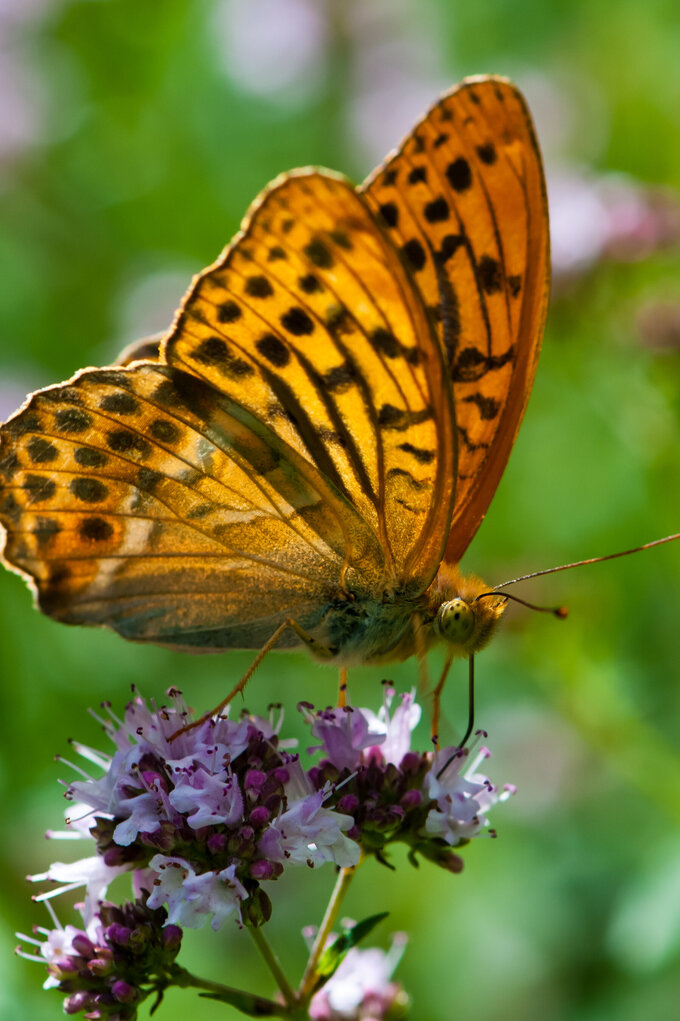The dock green widow - butterfly of the year 2023
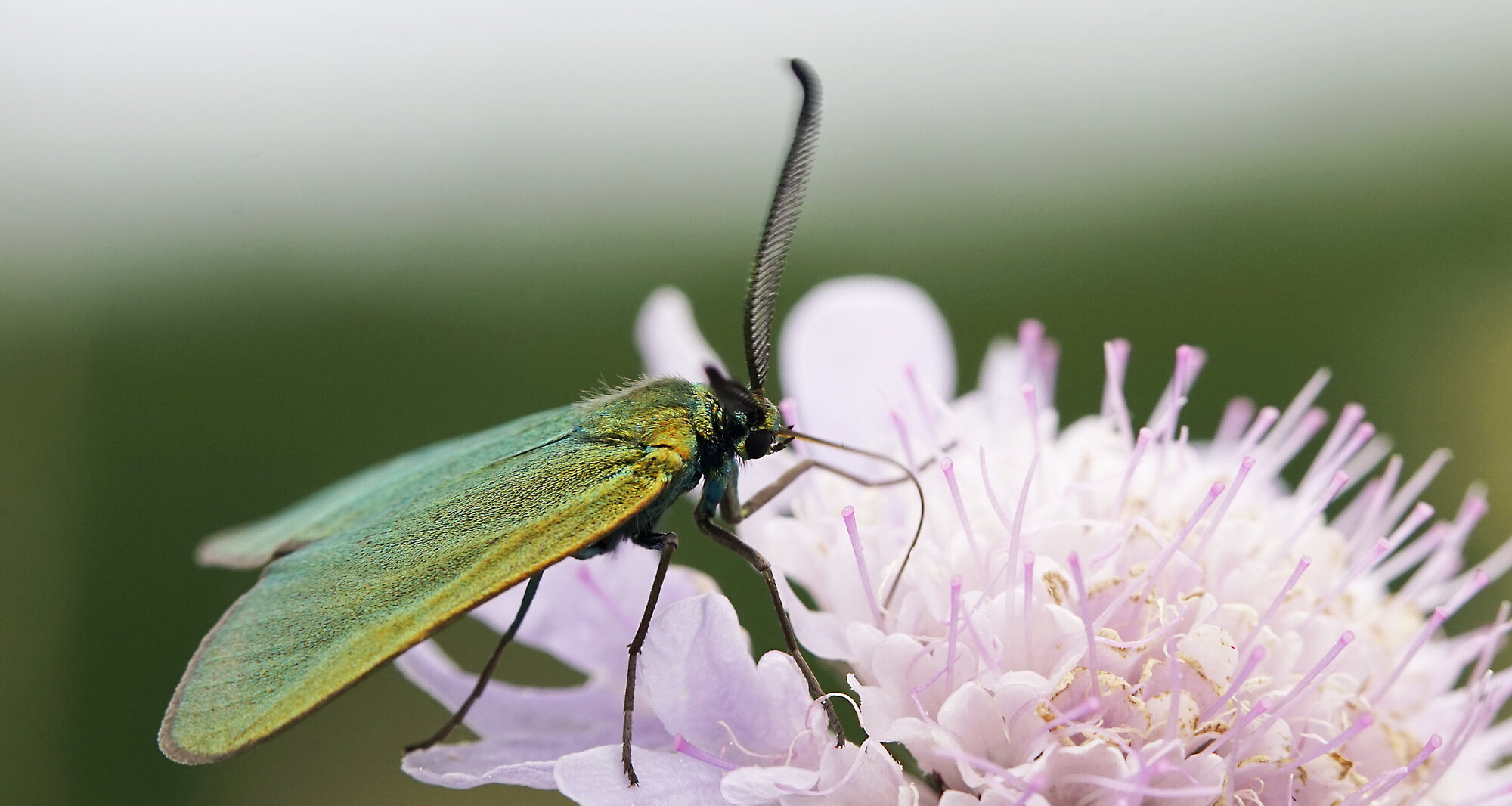
Ram of the air
The dock green widow (Adscita statices) is a moth of the ram family and was chosen as butterfly of the year 2023 by the Arbeitsgemeinschaft Rheinisch-Westfälischer Lepidopterologen (butterflyologists) and the BUND NRW Naturschutzstiftung. It is also known as the sorrel green widder or common green widder.
The name Widderchen can be derived from the feeler shape of the butterfly family, which resembles the horns of a ram. The butterfly has a wingspan of 25-30 mm, with males being slightly larger than females. One generation of the butterflies is formed per year. The flight season begins around mid-May, peaks in June or July, and then ends in August.
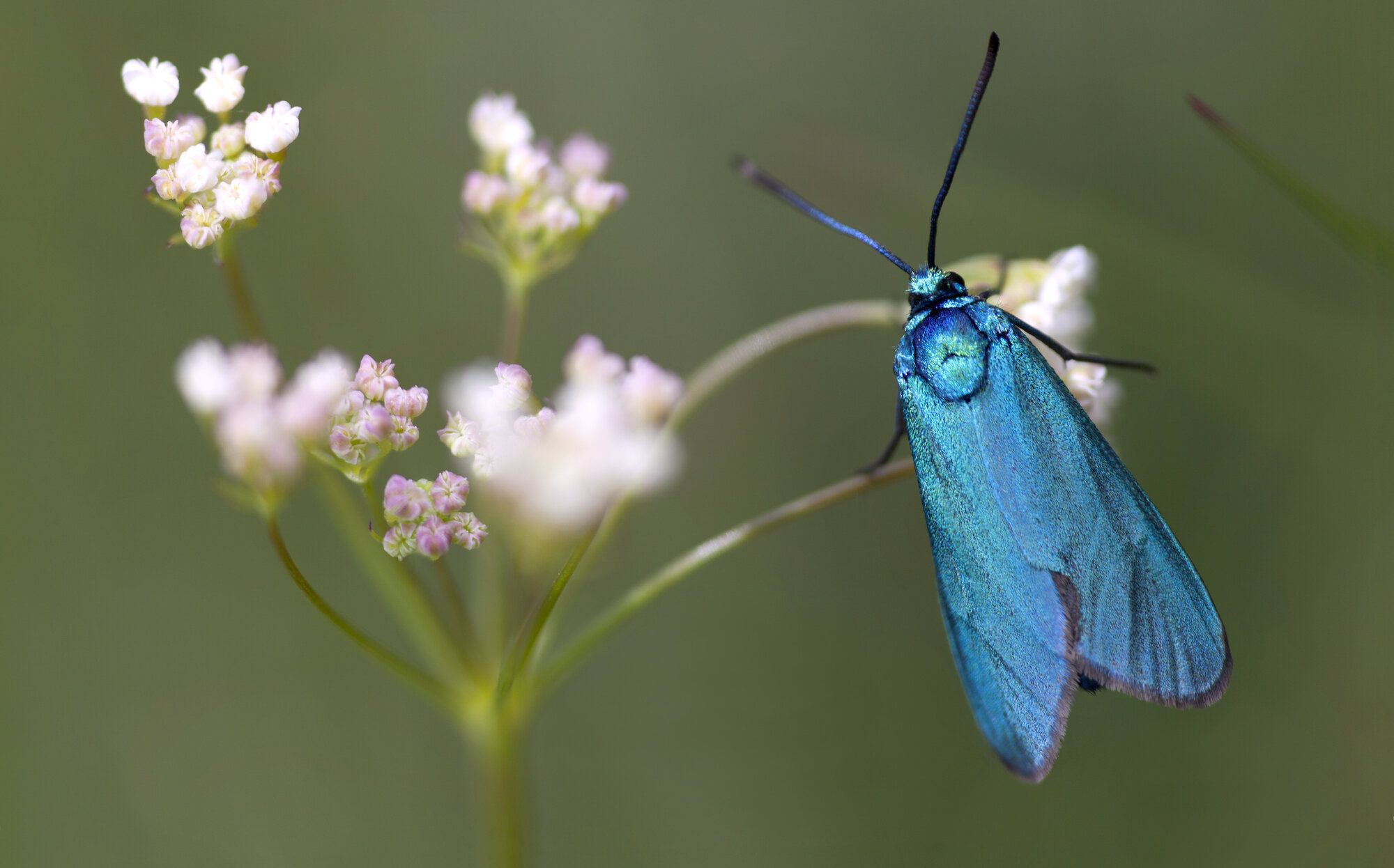
Diurnal moths
Even though they belong to the moth family, dock green violets are diurnal, with little flying in cloudy weather. They prefer to suck the nectar on purple-blue flowers, such as those of the cuckoo campion in particular, but also of the field widow's-flower, meadow-bellflower or thistles. The foraging flight usually ends in the early afternoon, followed by mating flights until dusk.
Fertilized females lay the eggs immediately afterwards on the underside of the leaves of their host plants (e.g. sorrel) as so-called ice mirrors. Ice mirrors are flat, regularly arranged egg clutches of insects. Starting in August, the caterpillars initially live mined from the egg until overwintering, which means that they eat tunnels into the interior of the plant. Thereafter, the caterpillars feed preferentially on acid sorrel species (e.g. meadow sorrel or lesser sorrel). In May of the following year, the caterpillars pupate.
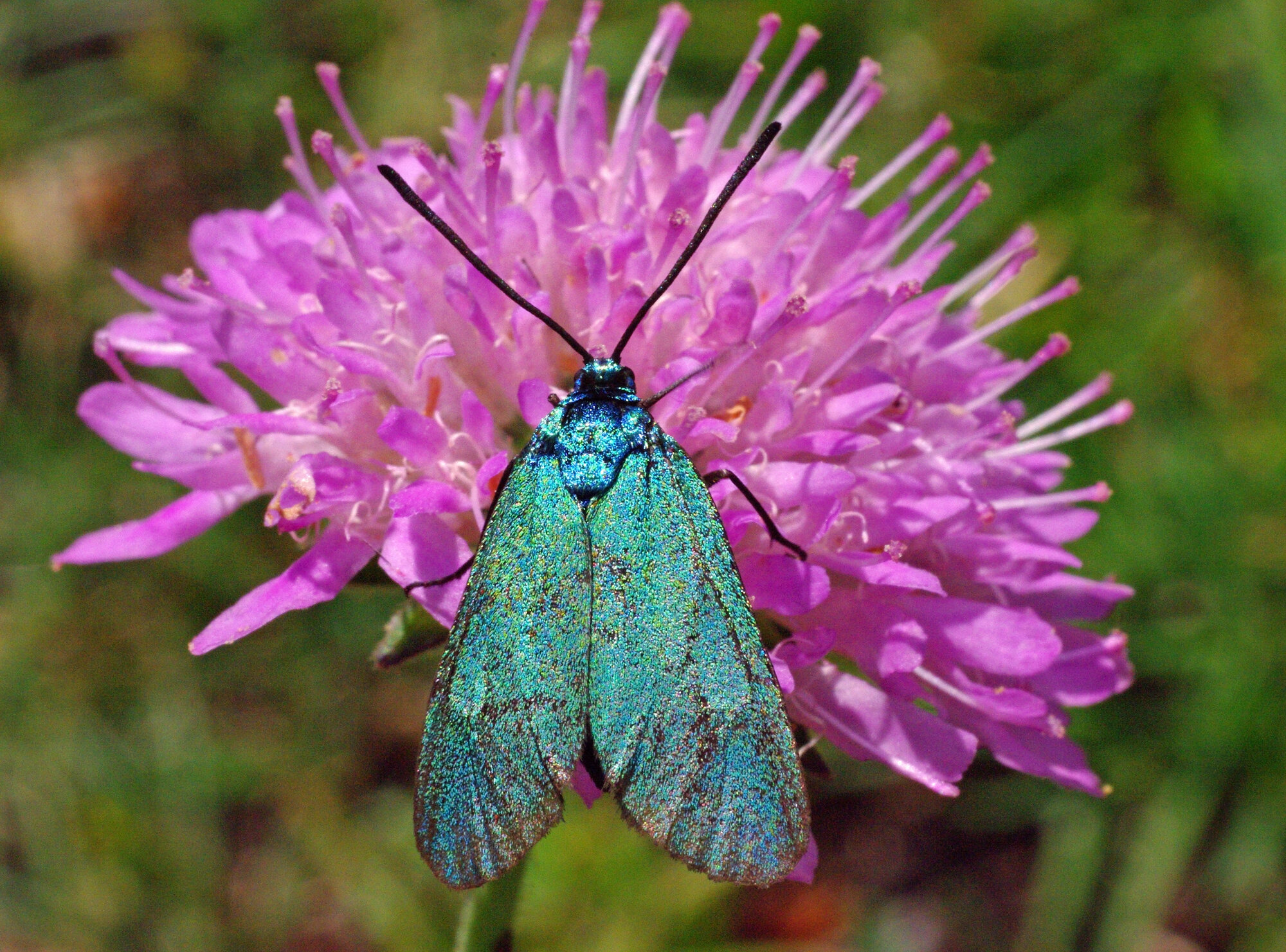
Small and dazzling
The small moths are metallic iridescent, sometimes more greenish, sometimes more bluish-turquoise. The fringes on the wings are grayish, as well as the underside of the wings and the hind wings. Thereby the males do not differ from the females externally. They can only be distinguished from each other by their antennae. Females have thinner, thread-like antennae. The antennae of the males, on the other hand, are conspicuously feathered and help to detect the scent of the females.
The dock green widow is the most common green widow in Germany and is represented in all German states. It can also be found as far away as Central Europe and Scandinavia, Western Siberia, Armenia and as far away as the Balkan Peninsula, Northern Spain and England. It can be found on species-rich, wet and alternately moist meadows, but also on dry dams, embankments and rough grasslands, and in the mountains up to about 1500 meters above sea level.
In Germany, the dock green widow is already on the forewarned list of the Red List of Threatened Species. Even though it is still common, its populations are declining, so that it is already considered endangered in North Rhine-Westphalia and Baden-Württemberg. This is due to the fact that the butterfly's habitats are also threatened by increasingly intensive agricultural use and are becoming smaller and smaller.

